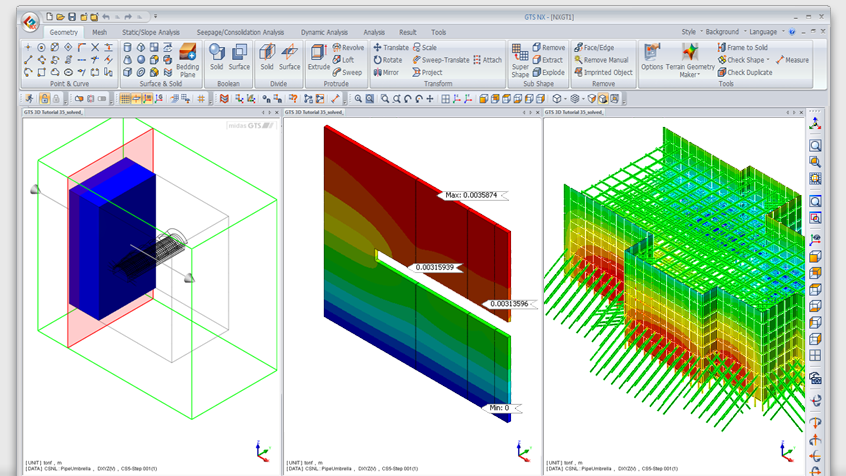

If CitEc recognized a bibliographic reference but did not link an item in RePEc to it, you can help with this form. It also allows you to accept potential citations to this item that we are uncertain about. This allows to link your profile to this item. If you have authored this item and are not yet registered with RePEc, we encourage you to do it here.
#MIDAS GTS NX INTERFACES HOW TO#
See general information about how to correct material in RePEc.įor technical questions regarding this item, or to correct its authors, title, abstract, bibliographic or download information, contact. When requesting a correction, please mention this item's handle: RePEc:gam:jsusta:v:12:y:2020:i:23:p:10036-:d:454455. You can help correct errors and omissions. 12(9), pages 1-21, May.Īll material on this site has been provided by the respective publishers and authors. " Experiments on Fiber Concrete Foundation Slabs in Interaction with the Subsoil,"
#MIDAS GTS NX INTERFACES CODE#
" Parallel Code Execution as a Tool for Enhancement of the Sustainable Design of Foundation Structures,"

In the presented study, three constitutive models of slab recommended in MIDAS GTS NX code for modelling concrete behaviour (elastic, Mohr-Coulomb and Drucker-Prager) were applied.

Numerical results were compared with the experimental measurement of vertical displacements on the upper surface of slab.
#MIDAS GTS NX INTERFACES SOFTWARE#
The specialized geotechnical software Midas GTS NX, based on the finite element method, was used for the modelling of this task. This paper is focused on the three selected factors of numerical modelling of fibre concrete slab and subsoil interaction: (1) the constitutive model of fibre concrete slab, (2) deformational and strength characteristics of subsoil, (3) effect of interface elements. Numerical modelling is currently used very effectively to design optimized and sustainable structures, including their interaction with the surrounding rock environment. Shape and material optimization of building structures, including reducing the amount of concrete used, are very important aspects in sustainable construction.


 0 kommentar(er)
0 kommentar(er)
